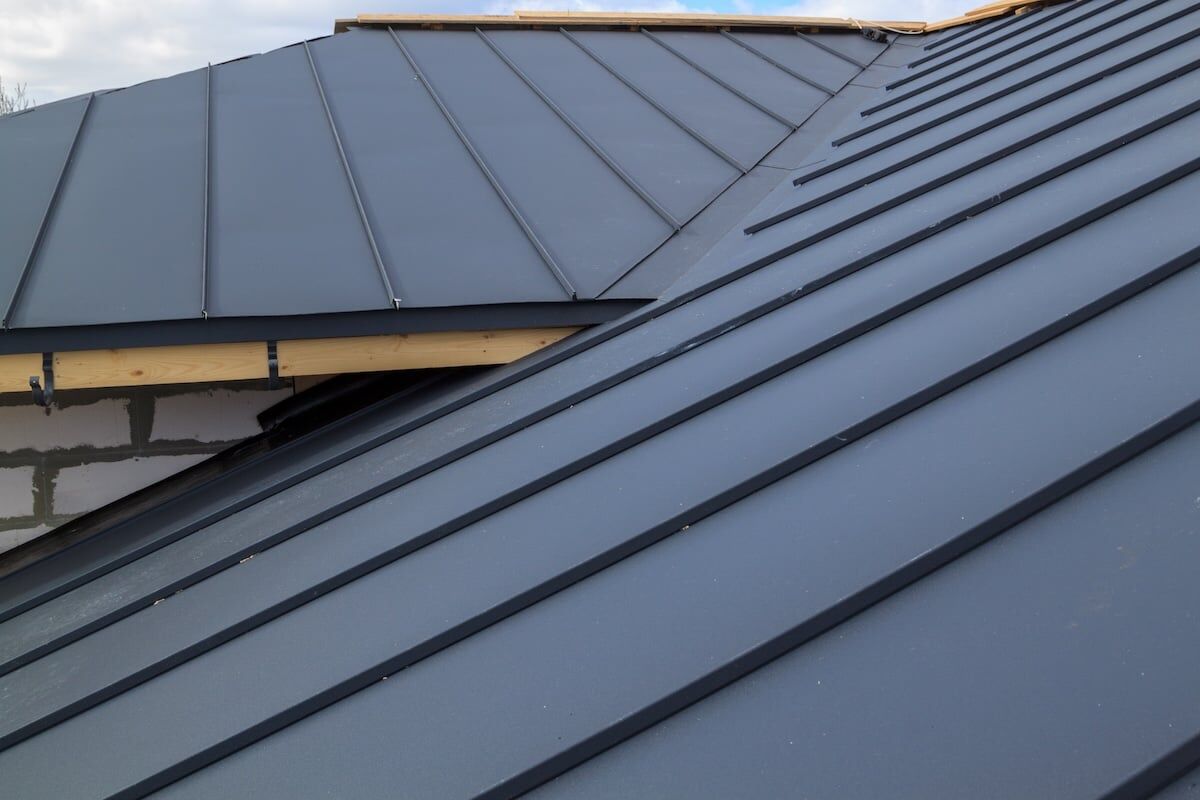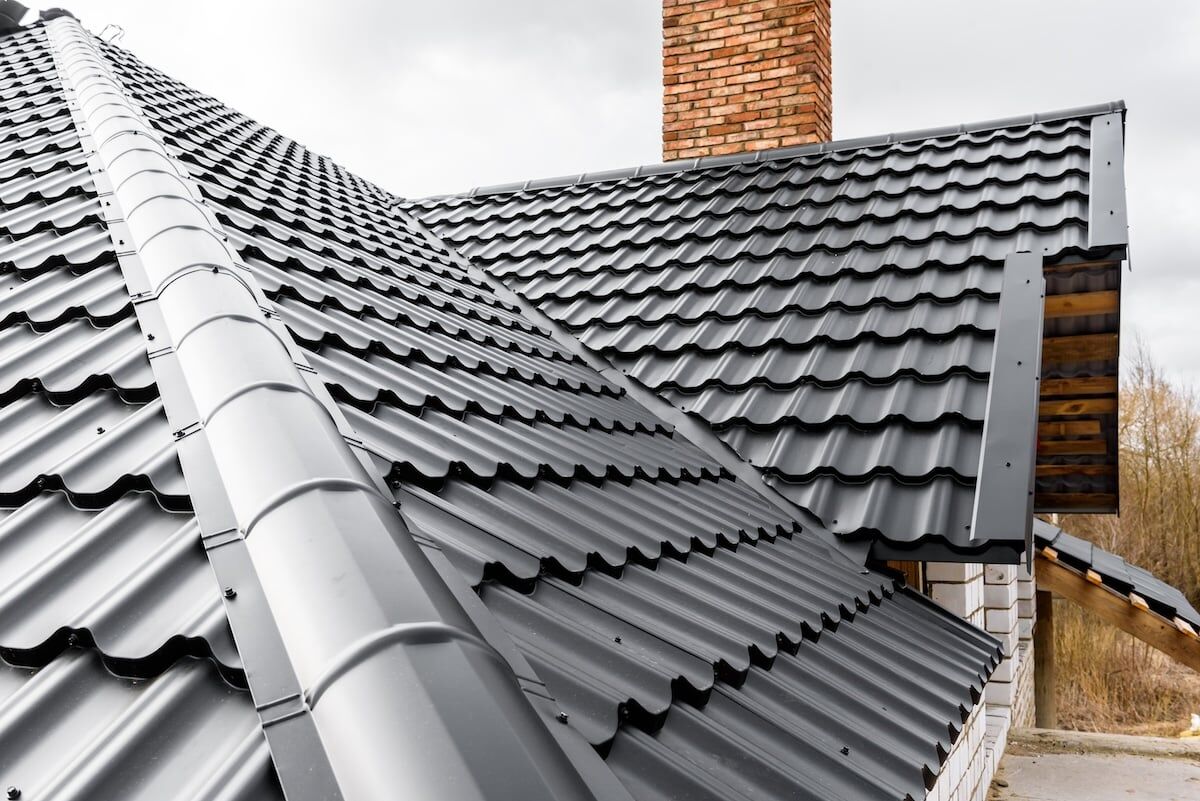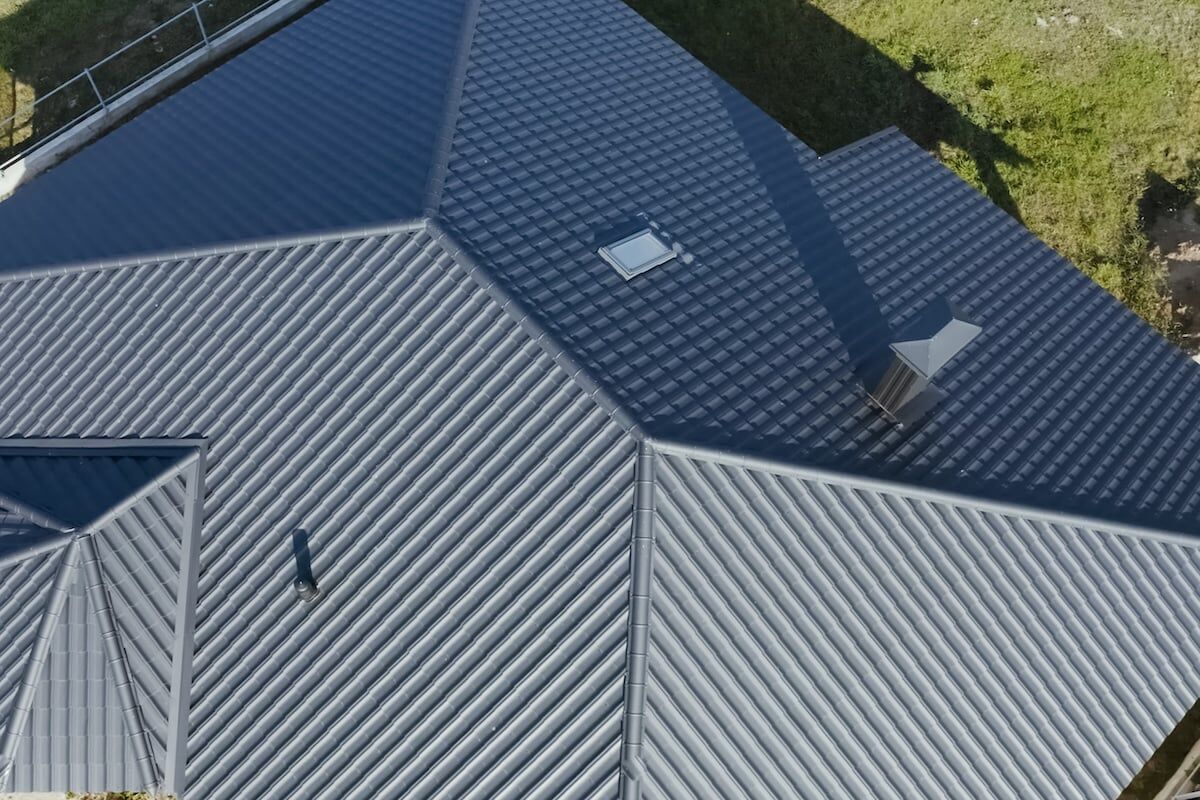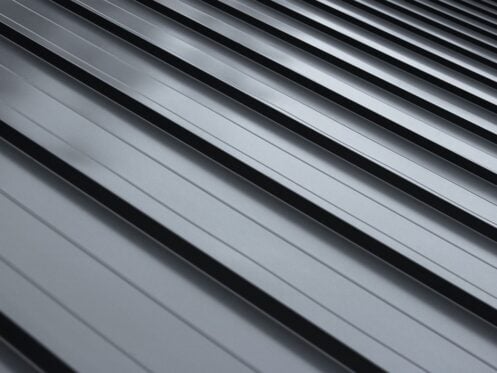Understanding the minimum pitch for metal roof installations is essential for homeowners considering this durable and modern roofing option. Roof pitch—the angle or steepness of your roof—not only affects appearance but also determines how well your roof handles rain, snow, and debris. With metal roofing, pitch is especially important for performance and code compliance.
- Drainage and safety: Low-pitch metal roofs require proper panel types to prevent leaks.
- Material selection: Not all metal panels are rated for the same pitch.
- Code requirements: Local regulations may dictate the lowest allowable pitch for metal roofing.
In this guide, we’ll break down how pitch affects metal roof installation, explore the minimum requirements, and help you determine what works best for your home.
📐 What Is Roof Pitch?
Roof pitch describes the slope of your roof and is usually written as a ratio (like 4:12 or 6:12). This means the roof rises 4 or 6 inches for every 12 inches of horizontal run.
Common Pitch Ranges
- Low-slope: 1:12 to 3:12
- Moderate slope: 4:12 to 6:12
- Steep slope: 7:12 and above
Each pitch category has different implications for drainage, material compatibility, and installation techniques.
❗️ Why Pitch Matters for Metal Roofing
Metal roofs are prized for their strength and longevity, but they perform best when installed with proper slope. The pitch directly impacts how water, ice, and debris move off the roof.

How Pitch Affects Performance
- Water runoff: Steeper pitches shed water faster, reducing leak risks.
- Snow and ice: Proper pitch prevents heavy buildup that can lead to structural strain.
- Ventilation and airflow: Roofs with adequate pitch allow better airflow and reduce condensation issues.
Without the right slope, metal panels can pool water or experience seepage along seams or fasteners.
📋 What Is the Minimum Pitch for Metal Roof Installation?
The minimum pitch for metal roof panels depends on the type of panel being used. In general, most metal roofs require at least a 3:12 pitch, but some systems are designed for flatter applications.
Panel Type Matters
- Standing seam metal roofing: Can often be installed on roofs with a pitch as low as 1/4:12 when mechanically seamed and sealed properly.
- Snap-lock standing seam: Requires a minimum of 3:12 to function safely without leaks.
- Corrugated metal panels: Typically need a 3:12 or greater pitch to prevent water intrusion.
- Exposed fastener panels: Usually installed on roofs with a 3:12 or steeper pitch due to their more vulnerable fastening system.
Always follow the manufacturer’s recommendations to ensure your roof stays watertight and warranty-compliant.
⭐️ 5 Key Factors That Influence Minimum Roof Pitch
When deciding what pitch your metal roof needs, consider these important factors:
1. Roof Design and Architecture
- Homes with flat or nearly flat rooflines will need special low-slope rated systems.
- Contemporary or modern homes often have low-slope profiles that require mechanically seamed metal panels.
2. Climate and Rainfall
- In areas with heavy rainfall or snow, a higher pitch is advised to promote fast water drainage.
- Low-pitch roofs in wet climates are more susceptible to pooling and leakage if improperly installed.
3. Type of Metal Roofing System
- Not all metal panels are created equal. Mechanical-seam systems are more watertight for low-pitch roofs.
- Exposed fastener panels should only be installed on moderate to steep slopes for optimal performance.
4. Installation Method
- Mechanically seamed panels with sealant and clips are safer for low-slope applications.
- Panels installed without sealants or extra waterproofing must have a steeper slope.
5. Local Building Codes
- Your city or county may have regulations that override manufacturer recommendations.
- Permits and inspections often require proof that your chosen pitch and system meet code.

👍 What to Know About Low-Slope Metal Roofs
Installing metal on a roof with less than a 3:12 pitch comes with extra considerations. While not impossible, it demands expertise and specialized materials.
Extra Waterproofing Measures
- Sealant tape: Used at seams to prevent water intrusion.
- Underlayment systems: High-quality synthetic or self-adhering membranes add backup protection.
- Wider seams: Custom-designed panels reduce the number of seams and leak points.
Specialized Metal Roofing Products
Some products are engineered specifically for low-pitch roofs. These often feature:
- Hidden fasteners to prevent water exposure
- Tighter seams that can be machine-locked and sealed
- Stronger gauge metals for extra resistance to standing water
⭐️ Minimum Pitch for Metal Roof by Panel Type (Quick Guide)
Here’s a helpful reference to show common minimum pitch requirements based on panel style:
- Mechanical Lock Standing Seam: 1/4:12 minimum
- Snap-Lock Standing Seam: 3:12 minimum
- Corrugated Panels: 3:12 minimum
- Exposed Fastener Panels (R-Panel, U-Panel): 3:12 minimum
- Batten Seam or Custom Fabricated Panels: May vary, but generally 2:12 or higher
If your home has a pitch lower than 3:12, consult a roofing professional about using mechanically seamed systems or flat roofing alternatives.
👉 Pros and Cons of Low-Pitch Metal Roofs
Choosing a low-pitch metal roof can work well if installed correctly, but there are trade-offs to consider.
Pros
- Modern aesthetic: Clean, flat lines appeal to contemporary home designs.
- Energy efficient: Low-profile roofs may offer fewer air leaks and better insulation when built properly.
- Durable materials: Metal performs better than many other materials on low slopes.
Cons
- Increased leak risk: Especially if using panels not rated for low slope.
- Higher installation costs: Specialized panels and sealants raise labor and material costs.
- Limited options: Fewer panel styles are approved for very low-pitch roofs.

🤔 Should You Increase Roof Pitch for Metal Roofing?
If you’re planning a full roof replacement or new construction, it might be worth increasing your roof’s slope to accommodate a wider range of panel styles and lower installation complexity.
Benefits of Higher Pitch
- Improved drainage: Water and debris run off faster.
- More style options: You can choose from more panel types and profiles.
- Easier maintenance: Leaks and buildup are less likely to occur.
However, increasing pitch involves structural changes that may increase costs. Consult a roofing contractor to explore feasibility and benefits.
✅ Choose the Right Pitch for Long-Term Metal Roof Success
The minimum pitch for metal roof systems depends on panel type, installation method, climate, and code requirements. Whether you’re going for a sleek low-profile look or a steep classic style, it’s critical to choose the right materials and pitch combo to ensure long-term performance.
At Indy Roof & Restoration, we help homeowners understand every detail of their roofing system—pitch included. Our experienced team can recommend the best panel style for your roof’s slope, ensure local code compliance, and deliver a seamless, leak-free installation from start to finish.
Ready to upgrade to a metal roof or need guidance on what pitch is right for your home? Contact Indy Roof & Restoration today! Let’s get your roof ready for decades of durable protection.

